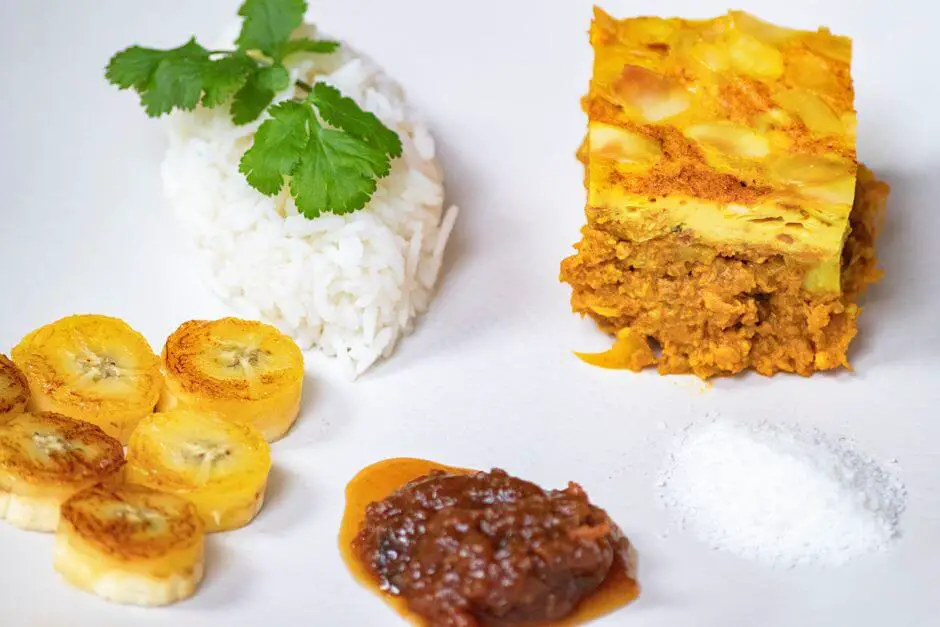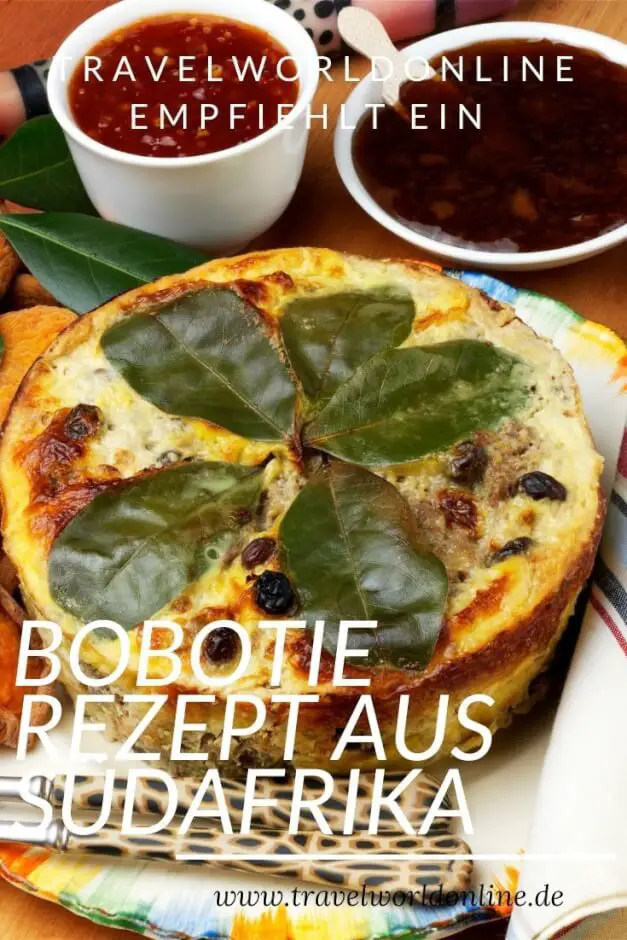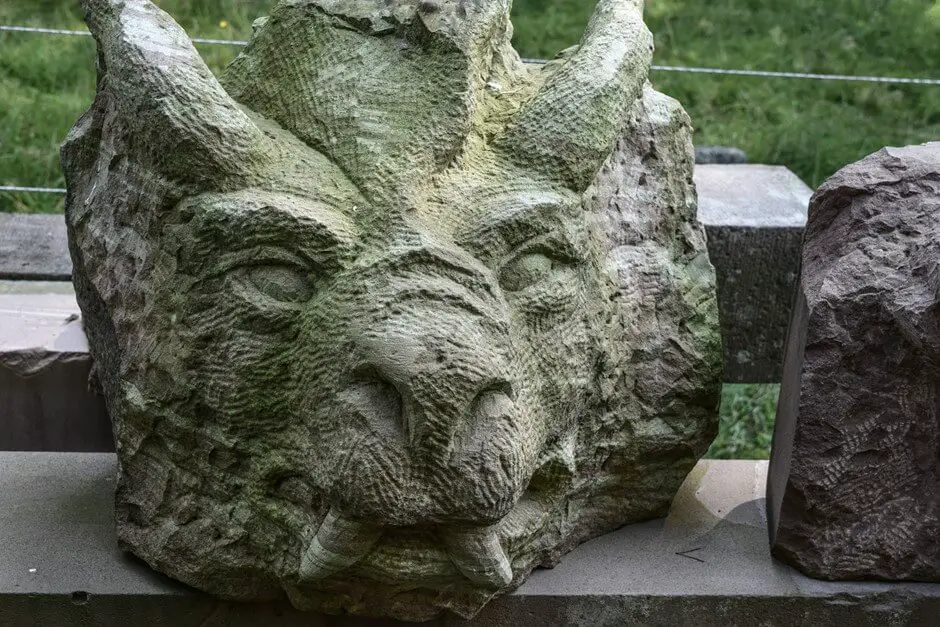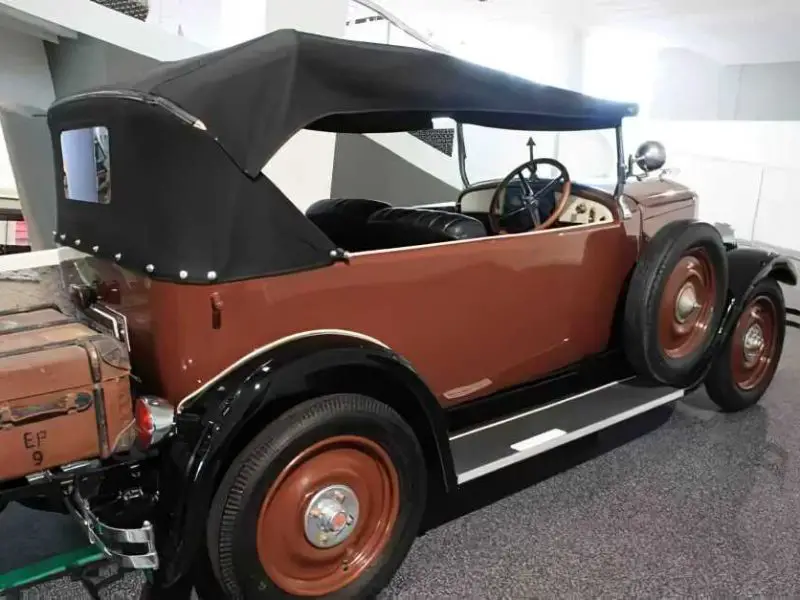African bobotie recipe from South Africa Photo © Copyright Olivier Colas CC BY-SA 4.0
Bobotie recipe from South Africa
This Bobotie recipe from South Africa is a dish that I will always associate with the Cape Town region. Over the years I've toured South Africa, Bobotie was one of the dishes I looked forward to every time I came to the Cape region. It is very common in Cape Town and the surrounding area. It's on the menu in many restaurants. Therefore, you can try it well on a trip to the region. Or you can prepare it yourself at home. We have it african Recipe Bobotie every now and then from your own kitchen.
A Bobotie recipe from South Africa from the kitchen of Boschendal we introduce you here. There is probably no dish from South Africa that better represents the cuisine of the Cape Malays in Cape Town. This recipe basically contains the genesis of this dish. It is not even certain that the food actually originated in the islands of Indonesia, as many believe. Wikipedia claims that it is a recipe that can be traced back to the Romans. The Roman Apicius describes a casserole whose ingredients and preparation are strongly reminiscent of South Africa's specialty.
Roman forerunner
Patinam ex lacte consisted of a layer of meat and pine nuts. It was seasoned with paprika, celery seeds and asant, a type of resin that is still used in Indian cuisine today. These ingredients were cooked until their taste combined. A mixture of egg and milk was then poured onto it. As soon as it was set, the dish could be eaten. The gourmet C. Louis Leipoldt assumes that this dish was already known in Europe in the 17th century. The Bobotie recipe is reminiscent of this forerunner from Rome.
Were the Dutch or the Malays who invented the Bobotie recipe?
Whether the Bobotie recipe came from the Dutch or the Cape Malays cannot be precisely determined. It is possible that influences from both groups played a role in its creation. For the seafarers of the East India Company, the southern tip of Africa was just a stopover, a kind of rest stop on their way to the spice regions of Asia. Here they built a vegetable garden and a little later the first wineries. At first, no one thought of settlement. The spices of Asia were more interesting for the traders from Holland. Possibly the recipe of the Romans reached Asia with ships from Holland. They brought it back to the Cape in a modified form.
The name of the Bobotie recipe suggests Malay influences. The Afrikaans etymological dictionary sees the origin of the name in the Malay term boemboe This is how curry spices are called. Others think the name comes from bobotok ab, a dish from Indonesia. However, its ingredients do not go with Bobotie as it is cooked today. It has been known on the Cape of Good Hope since the 17th century.
No matter how the Bobotie recipe went, the dish as it is known today is cooked in the kitchens of the Cape Malays. In Cape Town, many live in the Malay district of Bo Kaap. From there the dish began to conquer the kitchens of the Cape region.
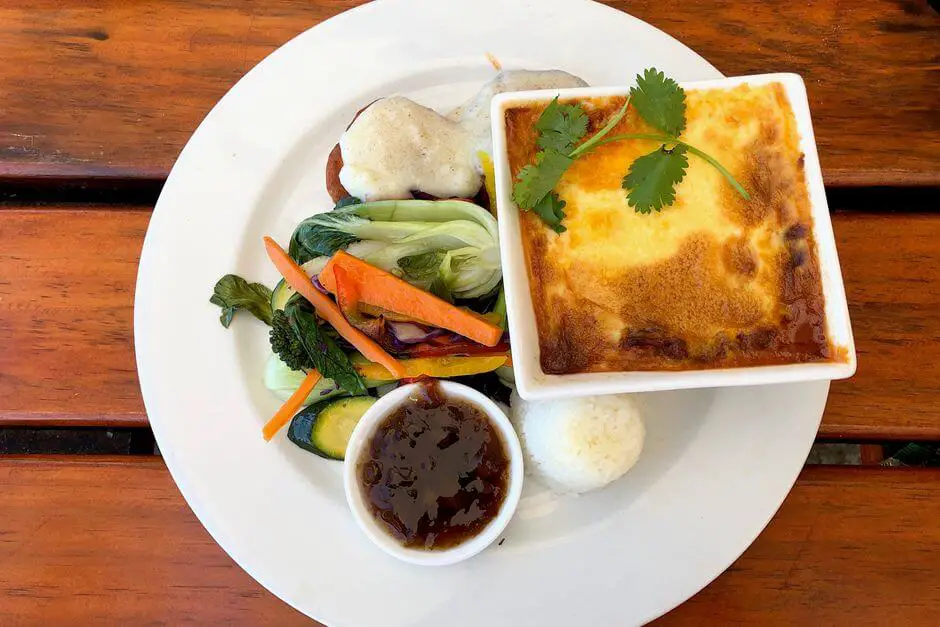
Bobotie recipe variations
The court will also South Africa's kitchens cooked in various variations. The basic version of the Bobotie recipe consists of minced meat (lamb or beef), soaked bread, butter, eggs, chopped onions, garlic, curry and turmeric. All ingredients are mixed and baked in the oven at a low temperature. As soon as the meat mixture browns, mix eggs with milk and pour this over the meat. Then leave the bobotie in the oven again at a low temperature until it turns brown. It is important that you do this at a low temperature, otherwise the dish will be dry. You want to avoid that. Because Bobotie tastes best juicy with rice.
Since bobotie is no longer only cooked in Malaysian kitchens, there are now variations that taste just as good. There are people who add chopped almonds and raisins to the meat mixture, for example. Others toast breadcrumbs in fat and then add them to the egg and milk mixture. Still others add a tablespoon of sugar to the meat mixture to emphasize the sweetness. Or you can add tamarind water for a sour taste
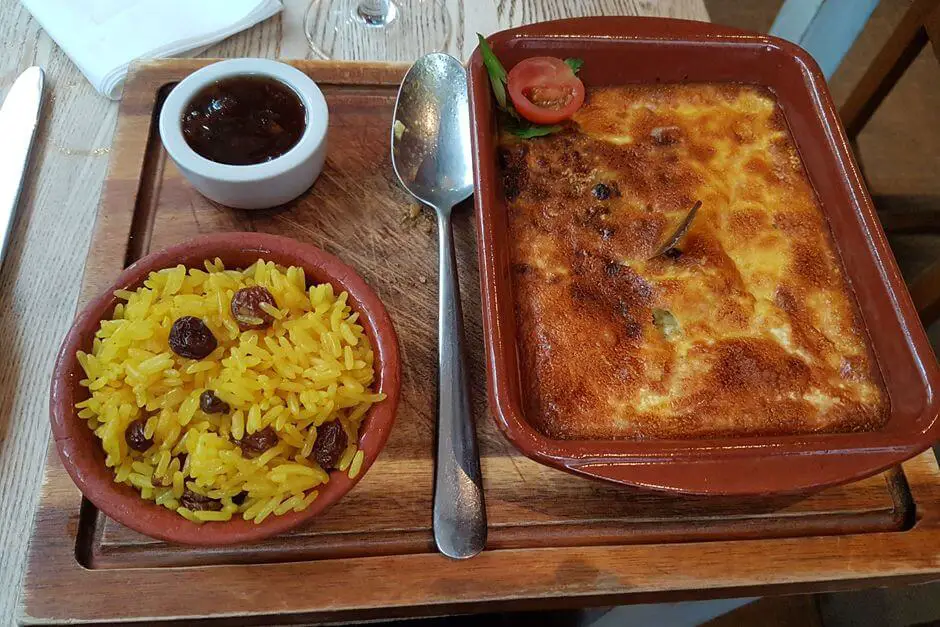
The recipe from the Boschendal winery
Ingredients Bobotie recipe
- two onions, chopped
- two cloves of garlic, crushed
- a tablespoon of curry powder
- two tablespoons of oil
- a slice of old toast bread
- a cup of milk
- two eggs
- a tablespoon of sugar
- a teaspoon of salt
- freshly ground pepper
- half a teaspoon of turmeric
- Juice of a lemon
- three tbsp mango chutney
- 12 blanched almonds
- half a cup of raisins
- four strips of lemon peel
- two pounds of ground beef
Preparation
Lightly sauté onions and garlic in oil and add curry.
Soak the bread in milk and squeeze it out. Save the milk.
Mix the onion mixture with the bread and add all other ingredients except egg. Mix it well.
Pour the mixture into a greased mold and then put it in the oven (175° C) for an hour.
Mix the egg with the remaining milk and then pour the mixture over the meat.
Bake the dish for another 15-20 minutes.
Serve with rice and steamed apricots.
Source of African Bobotie Recipe: The New York Times
There are more recipes from Africa in this cookbook*.
If you purchase via a link marked *, we receive a commission, which we use to run this blog.
Do you know this?
- Funky Africa in Salzburg
- Taj Chakalaka recipe from South Africa
- Potjiekos from South Africa
- Recipes from all over the world
- Click on the photo and then save this “Bobotie recipe from South Africa” on Pinterest
Do you know this?
- Slow Travel Blog
- Staying at a hotel in Cape Town
- Cape Town Tips for Gourmets and Slow Travelers
- Cape Town To Do – What to do in Cape Town
- Cape Enrage - lighthouse, cliffs and sea
Source African Bobotie Recipe: Research, recipe from The New York Times. However, our opinions remain our own.
Text Bobotie recipe: © Copyright Monika Fuchs and TravelWorldOnline
Photos Bobotie recipe: © Copyright Canva, as well as see captions
